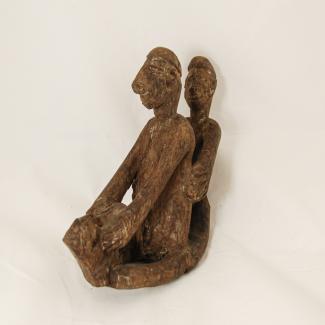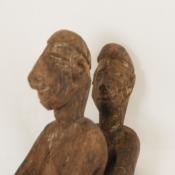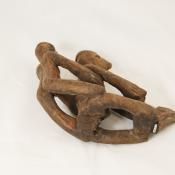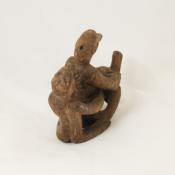This is a wooden Asmat ancestral carving, likely created in Papua New Guinea in the latter half of the twentieth century. It depicts two individuals in a seated position, with one behind the other. The figure in front is larger than the figure in the back and features a much thinner face and much larger nose. His hands are resting in front of him, connected to the legs by a wedge meant for sticking the carving into soft mud. The legs of the figure are connected to the wedge as well, giving him a sitting position. The rear figure’s arms are holding onto the waist of the front figure, and his legs are connected to the hips of the front figure. It is unclear whether the figures represented are male or female. Each figure has a carved portion at the tops of their heads indicating hairstyles. The piece is unpainted except for some red pigment fragments on the rear figure.
Ancestral carvings are an essential part of Asmat traditional culture. They are traditionally made for festivals honoring the Great Woodcarver Fumeripits, who is said to have carved humans from the trunks of sago trees. These figures are carved with the intention of planting them in the soft mud of villages, hence the wedge on their bottom portions. After festivals or spiritual occasions, they are often discarded in the rainforest in order for their spirits to revitalize the sago trees for future generations.
Colors: Red, Brown






